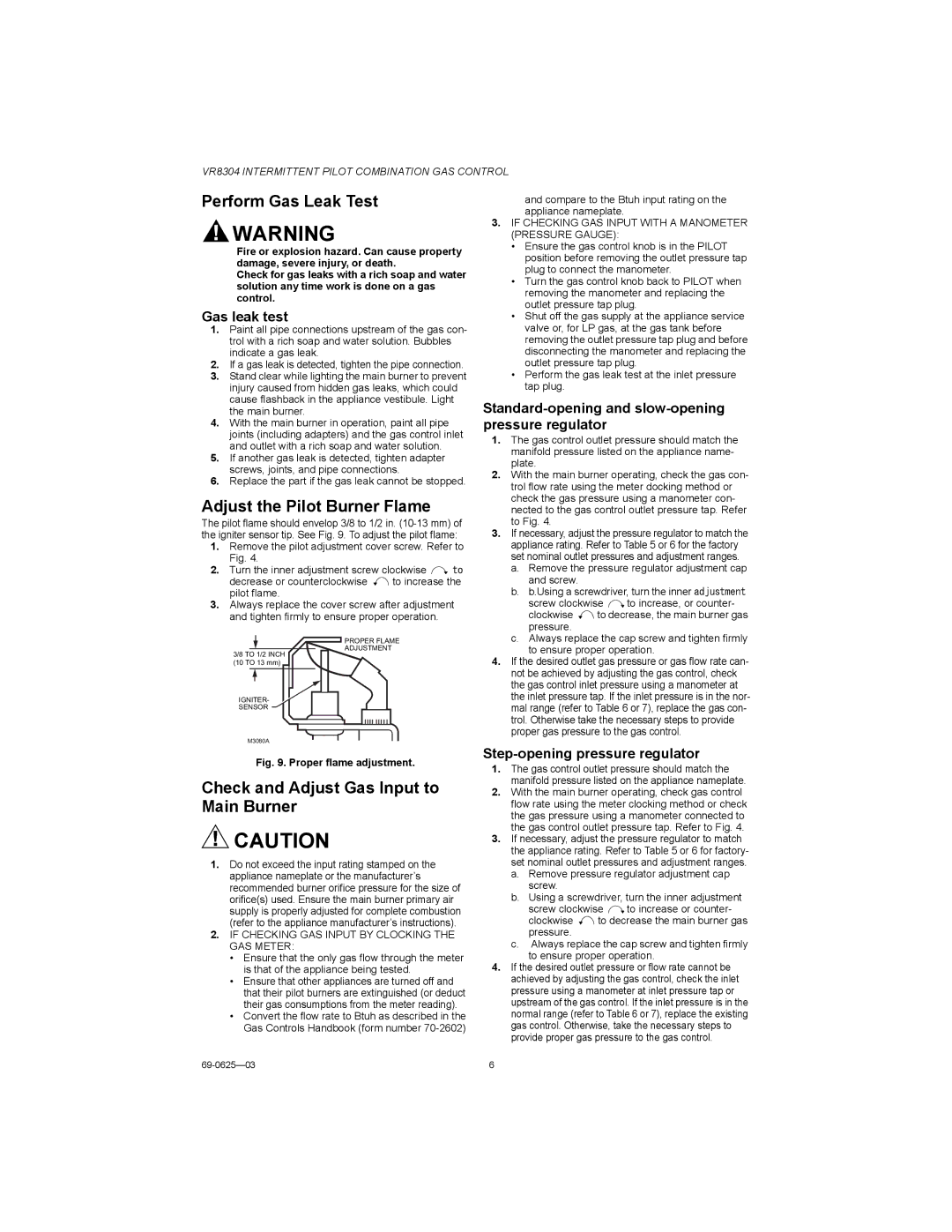VR8304 specifications
The Honeywell VR8304 is a sophisticated and reliable gas valve designed for use in residential and commercial heating applications. This integrated system is primarily used in conjunction with gas-fired appliances such as furnaces, boilers, and water heaters, offering improved efficiency and performance.One of the standout features of the VR8304 is its dual combination of safety and comfort, thanks to its electronic ignition and safety shutoff mechanisms. This gas valve is equipped with a built-in pilot safety system that ensures safe operation. In the event of a failure in the ignition system, the VR8304 automatically shuts off the gas flow, preventing any potential hazards.
The unit is designed for compatibility with natural gas or propane, making it versatile for various heating needs. It utilizes a robust solenoid-operated design, which enhances its responsiveness. The VR8304 also boasts a high heat capacity, allowing it to efficiently handle significant gas flow for both heating and domestic hot water applications.
One of the technological advancements found in the VR8304 is its adaptive control features. The valve can adjust the gas flow rate depending on the demand, which not only optimizes fuel efficiency but also enhances the comfort of the environment by maintaining consistent temperature levels.
Installation of the VR8304 is straightforward due to its compact size and intuitive design. It fits standard piping configuration, reducing the need for complex adjustments or modifications during installation. Furthermore, its durable construction ensures long-lasting performance, with resistance to common issues such as corrosion and wear.
Another important characteristic of the Honeywell VR8304 is its low operating pressure combined with extended operating range. This ensures effective operation across various environmental conditions and helps maintain system integrity over time.
Finally, the Honeywell VR8304 is backed by robust customer support and service options, ensuring users have access to assistance and information to maximize their system's efficiency and safety. In conclusion, the Honeywell VR8304 stands out as a highly efficient, durable, and versatile gas valve for any heating application. Its innovative features and technologies provide both safety and performance, making it a top choice among HVAC professionals and homeowners alike.

